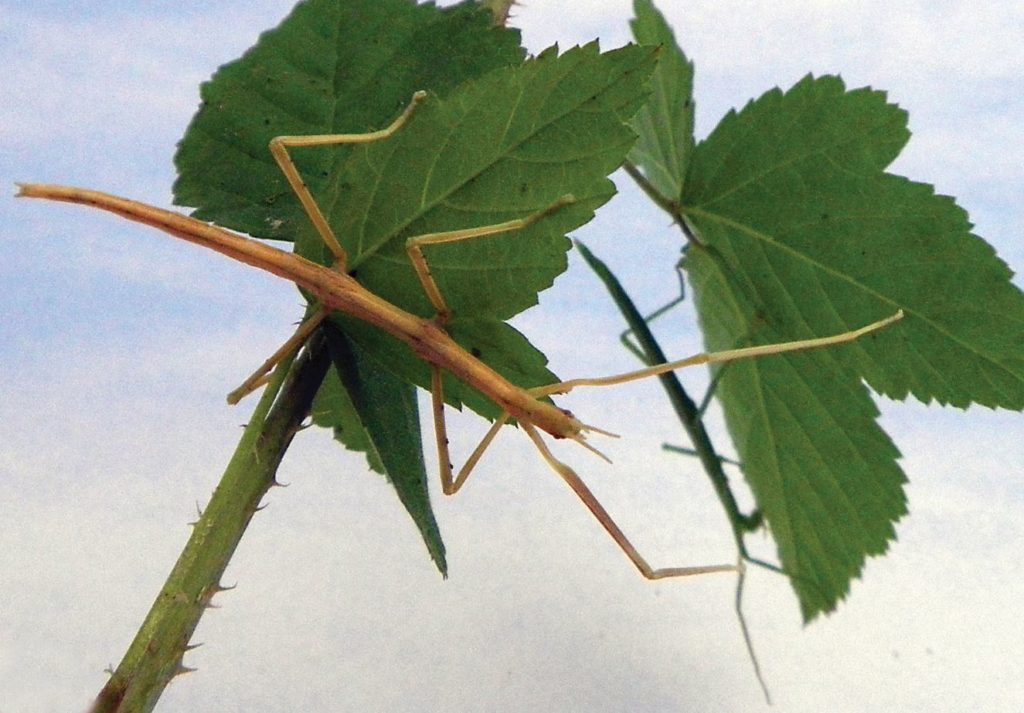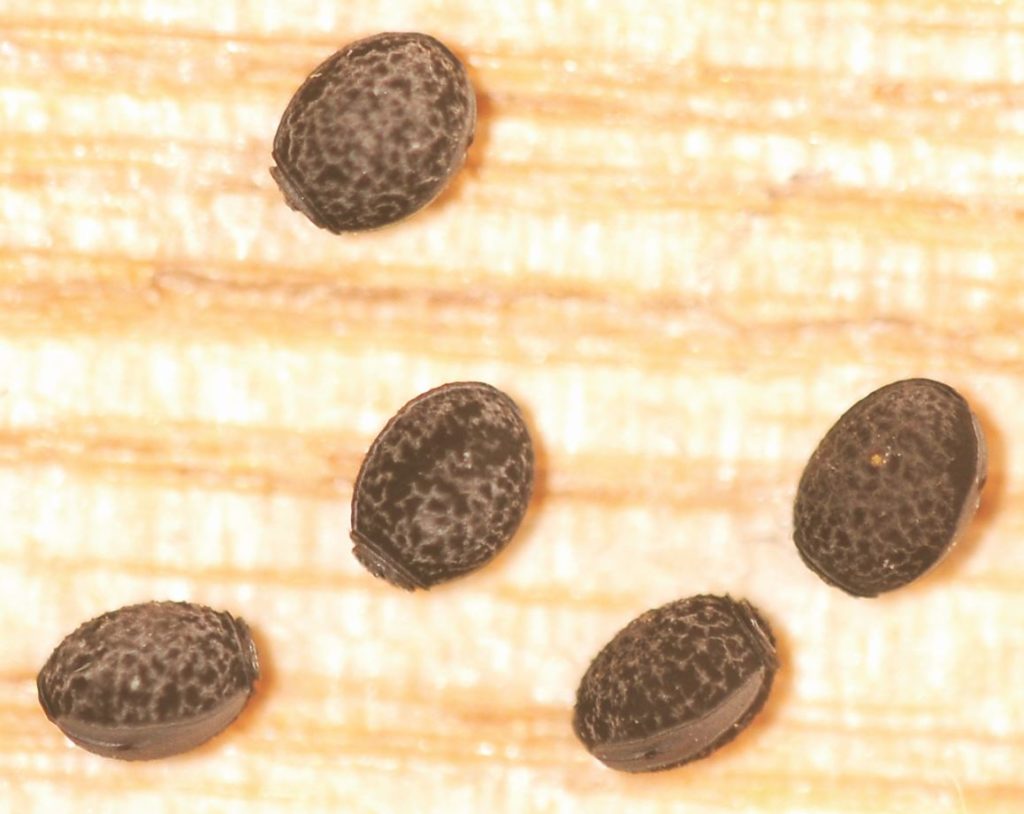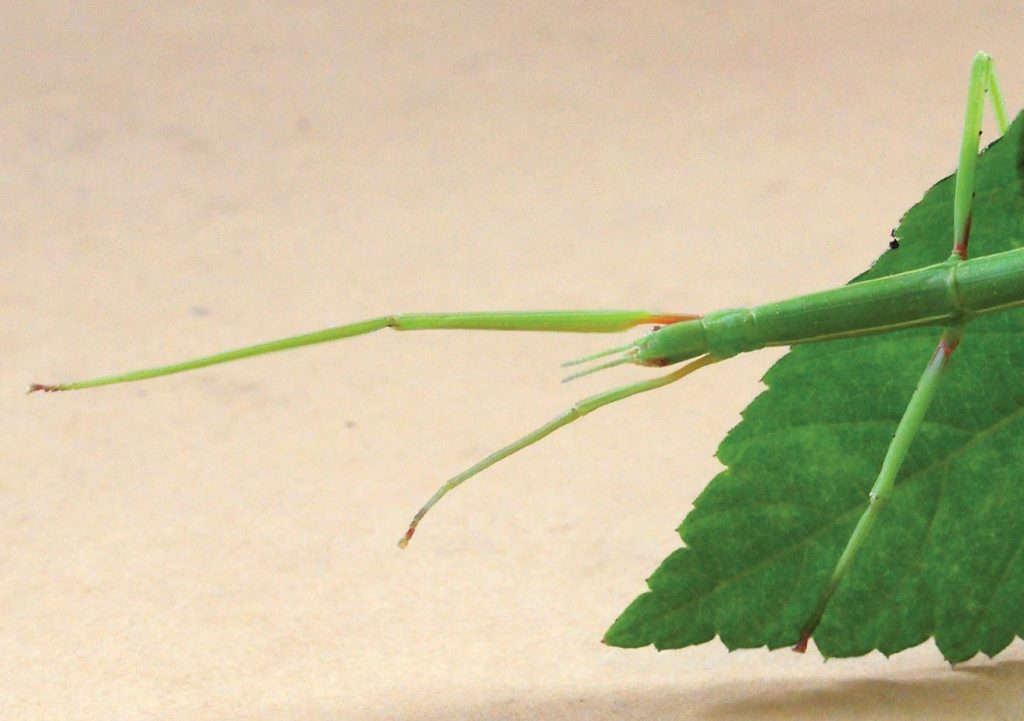Stick-insects
The Phasmida, also known as Phasmatodea or Phasmatoptera, are well known for their mimicry of twigs or leaves, and even their eggs resemble plant seeds, sometimes with sculptured surfaces.
They are clearly related to the Orthoptera; one group of Tettigoniidae in Australia shows a remarkable similarity to the stick-insects, but they also have many unique morphological and biological characters. They are generally confined to warmer parts of the world, with several species in southern Europe for example, so the few that can survive in Britain are confined to the south-west corners of England and Ireland. They are all wingless and long legged, with narrow bodies, and are basically nocturnal.
 Mediterranean stick-insect Bacillus rossius Credit Peter Barnard
Mediterranean stick-insect Bacillus rossius Credit Peter BarnardResting motionless on their foodplants during the day they can be very hard to see in the wild and are probably overlooked by the casual observer. Three of the four British species were introduced on plants from New Zealand, two in the early 20th century and the other apparently more recently. In their native country males are known in some species, but all the British populations reproduce parthenogenetically.
 Phasmid eggs Credit Peter Barnard
Phasmid eggs Credit Peter BarnardThe Phasmida are a popular group of insects for breeding in captivity and many species are available commercially. One of their intriguing characteristics is the ease with which lost legs can be regenerated at successive moults.
 Shortened front leg of stick-insect showing regeneration after loss Bacillus sp Credit Peter Barnard
Shortened front leg of stick-insect showing regeneration after loss Bacillus sp Credit Peter BarnardWorldwide there are around 3,000 known species in 2 families; in Britain there are 4 species in 2 families.
Identification help